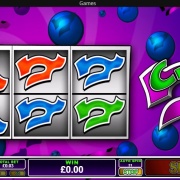05. Playing keyframes while painting weights is a good trick to learn. In addition to using the Paint Skin Weights tool, the Component Editor comes in handy for me if I need to do any manual fixes. Before I start to rig The Ningyo, I need to know some information about the creature. These locators are generated with a script I wrote and will be created in the centre of my selection. Here I’m going to show you how to rig a model for animation. 03. Scripting allows you to work faster and also enables you to push the role even further and to achieve even better results. I lock and hide unnecessary channel attributes to prevent distraction or potential issues with extra curves. You can download the extra assets from the 3D World asset page. Make sure that you delete the keys and set the joints back to the proper bind position. The project has been set-up by VFX veterans Miguel Ortega and Tran Ma, who left roles at some of the industry’s biggest studios to make their first independent film. This article originally appeared in 3D World issue 184. 02. As you can see in the image, the first is a neutral pose, the second a pure rotation, and the final image is a combination of rotation and translation. Ready for feedback
I think that letting the animator play with the rig is often the best way to find out if your rig is any good. This constant communication is extremely important for a rigger and helps for a smoother performance. When all the controls are created, I add attributes to certain controls, like the jaw controller, to activate certain Blendshapes associated with the mouth. The last one also has an open jaw specific Blendshape to help create wrinkles and nice fleshy movement. These attributes are connected to Blendshapes via set driven keys. Once all the locators are in place, I snap joints to the locators and move on to other parts of the creature. 07. Words: Dave Lo
Dave Lo is a character TD who has worked for Disney Animation, Digital Domain, ILM, Sony Imageworks, and Rhythm Hues. With all these questions answered, and with Miguel’s model completed and ready to be taken further, I can start the process of rigging. I need to ask some questions to fully understand the concept behind the creature and its wider story. I need to know how it moves, what type of animation is expected, and whether it will move in a realistic or cartoon-like, exaggerated fashion. Laying out locators and joints
Before I lay down a single joint, I lay down loads of locators. During the rigging stage it’s my chance to have an input into our movie: I mainly focus on rigging, modelling, cloth/hair, and rigid dynamics. 06. 04. I add channel attributes to control breathing shapes to the jaw controller; since the creature would breathe when the mouth is open. This makes finding the centre of something wavy, like a posed tentacle, fast and accurate. We lay the foundations for the animators to do their job and bring these creatures to life.
Library builder
Articles about the repair, construction, interior design and landscaping, plumbing, electrical, waterproof wire, wire gas, building materials, construction machinery and equipment ...
Библиотека строительства - статьи о строительстве и ремонте © 2020
Frontier Theme


